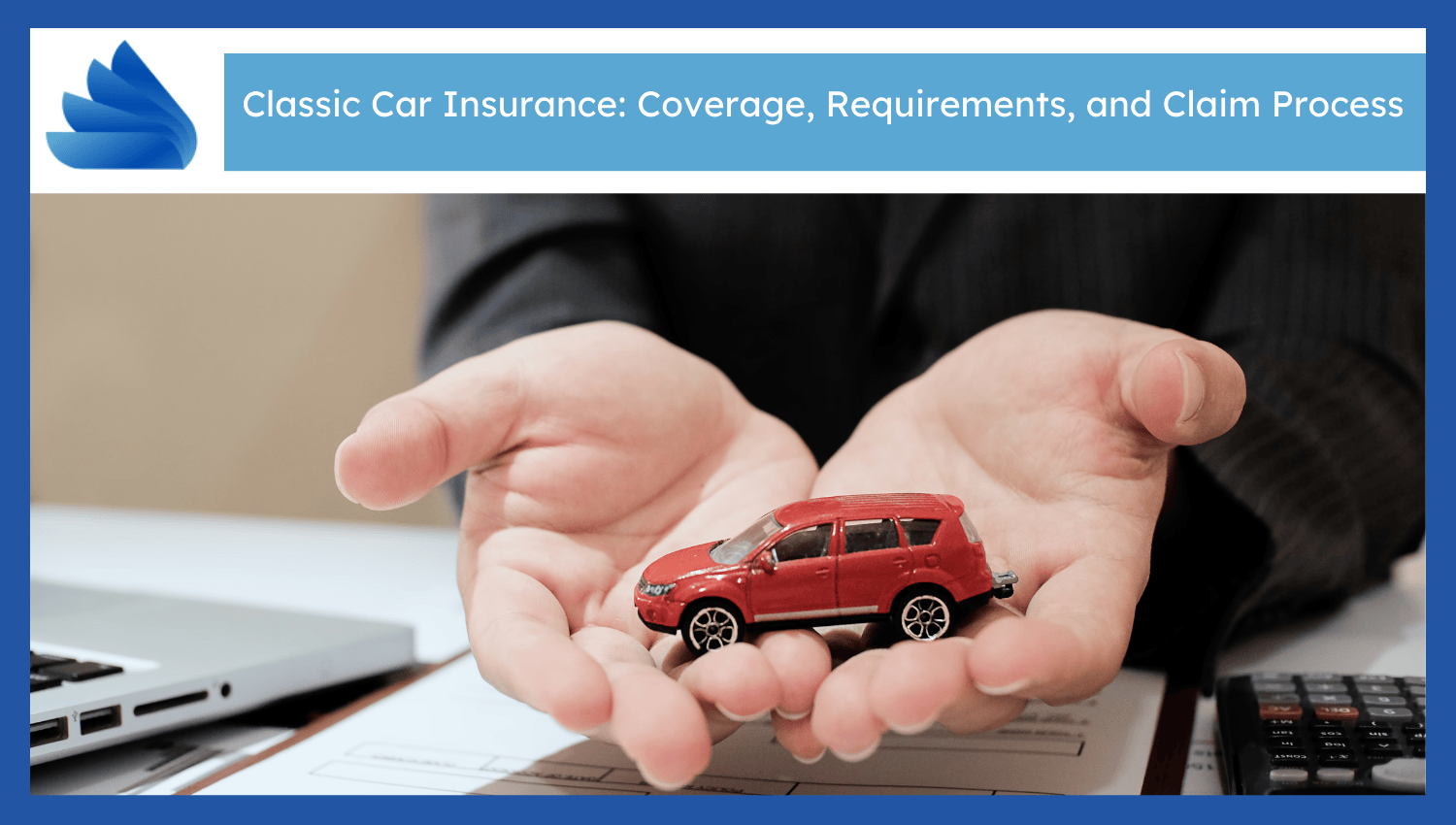
Classic Car Insurance: Coverage, Requirements, and Claim Process
Classic car insurance extends to collectable cars stored for pleasure or exhibition. It applies agreed-value coverage, where a fixed amount is paid according to the car's appraised value. This prevents depreciation losses that are reflected in regular auto insurance.
The standard auto insurance pays out at market value, disregarding rarity or restoration. Classic insurance covers rare parts, original materials and professional repair in a historically accurate manner.
George Baltas and Christina Giakoumaki (2021) reconfirmed previous studies in that rarity, originality, and aesthetic design have profound impacts on collectible vehicle value. The study justifies the necessity of non-depreciating insurance structures.
Classic car insurance conserves financial and historical value as it helps preserve restoration-specific requirements by focusing on maintaining a settled price. This is critical in assuring collectors and enthusiasts preserve genuine vehicles.
How Does Classic Car Insurance Work?
Here is the working of Classic Car Insurance:- Agreed Value Coverage: Before the policy begins, insurers and owners agree on a certain value of the car. In case of total loss, this represents the payout. This prevents low compensation and disputes over values.
- Usage Restrictions: Traditional insurance covers restrictions on the distance and the frequency of car travel. The majority of the policies are leisure only. Long drives, every day, or commercial duties violate the conditions and expose a loss of coverage.
- Storage Requirements: The automobile is kept in a storage shed or locked garage when unattended. This minimizes destruction, looting, or weather danger. Even short-term outdoor parking is frequently contrary to insurance conditions.
- Eligibility Criteria: The cars are qualified based on age, typically above 20 years, and in very good condition. Insurers then verify originality, maintenance history, and regard in giving approval of coverage. The modified or heavily damaged vehicles do not regularly meet the standard.
What Does Classic Car Insurance Include?
Here are the five coverage Classic Car Insurance includes:- Collision Coverage: Insures against repair expenses following an accident with a classic car. This involves bodywork, painting and replacement of parts that are required to change the condition of the car. It guarantees quality repairs that keep the car in its original appearance and functionality.
- Comprehensive Coverage: Preserves against theft, fire, vandalism, and natural catastrophes such as floods or storms. It also addresses damages not related to accidents and it keeps the car desirable and in condition in the event of car damage due to weather conditions or car theft.
- Liability Coverage: Covers physical harm and property damage to a 3rd party in an accident involving the insured classic car. It pays legal expenses and damages in case the insured causes harm or damage to other parties.
- Spare Parts Coverage: Covers replacement or repair of parts not readily available and necessary for restoration and maintenance. It maintains the vehicle in a genuine and pristine state by replacing any parts with original or equal parts in terms of quality.
- Classic Car Roadside Assistance: Includes flatbed trucks towing to avoid damage during transportation. Assistance with breakdowns or flat tires or lockouts. Such a service is more suitable for the transparent nature of classic cars and their special mechanical requirements rather than towing.
How to Qualify for Classic Car Insurance?
Here are the four ways to qualify for Classic Car Insurance:- Age of the Vehicle: Classic car insurance insures vehicles usually 20-25 years old or older. Such an age makes a vehicle collectible. Newer cars are not qualifying as insurers are targeting older cars that have a historic or collectible nature.
- Restoration and Condition: Insurers demand to see vehicles in good condition or restored to perfection. Eligibility is affected by originality and restored work. Unrepaired or poor condition reduces the value of a vehicle and frequently renders it ineligible to be covered by classic insurance.
- Driver’s Record: A clean driving history raises eligibility opportunities. The insurers do not want any recent accidents, claims, and violations. Responsible driving history is a good indication of responsible insurance, putting the insurer at less risk, and allowing classic insurance to go to its owner.
- Evidence of Limited Use: Mileage reports or utilization records represent occasional driving, mostly lower than 7,500 miles/year. Such records evidence that the vehicle is largely unused, allowing the insurers to ensure that the vehicle itself is in good condition and eligible to receive coverage.
How to File a Classic Car Insurance Claim?
Here are the five ways to claim Classic Car Insurance:- Notify the Insurer Immediately: Notify the insurer immediately when the incident takes place. Early reporting also prevents or delays lengthy processes and aids in the proper recording of unwarranted claims.
- Record the Damage: Get clear pictures of all the damage and take estimates on repairs. Get police reports, where relevant. These records are vital evidence to the insurer, which justifies the accuracy of the claim and prevents disputes in processing.
- Present Agreed Value Proof; Present policy papers and appraisal records to demonstrate the agreed policy of the classic car. These demonstrate the insured value of the car and are used to provide fair compensation when settling the claim.
- Work with Claims Adjuster: Schedule inspections promptly and respond to all the questions posed to the claims adjuster truthfully. Effective collaboration assists in establishing the truth of damages, expediting claims, and shortening the approval and payment processes.
- Receive Settlement: The insurer pays the amount covered in the policy as per the agreed value, less the deductible. It is a particular payment to restore or complete loss covering the value of the vehicle and upholding the terms of the agreement before the incident.

